

Molecular Expressions: Science, Optics and You - Timeline - Pioneers in Optics. Pioneers in the Optical Sciences From the earliest days in Alexandria (circa 300 BC) when Euclid described the laws of reflection in Optica, the science of optics has fascinated and challenged society's most brilliant minds.

The earliest pioneers in optics reached for the stars with difficulty as they developed crude lenses and mirrors for their telescopes while other investigators focused on the hidden microscopic world through aberration-plagued compound optical systems that hampered early microscopes. Today, millions of the optically-challenged need be thankful to these pioneers for the eyeglasses, contact lenses, and other advances that have evolved from innovations dating back as early as 1303 when Bernard of Gordon, a French physician, wrote about the use of spectacles as a way of correcting long-sightedness (hypermetropia).
Anders Jöns Ångström (1814-1874) - Anders Ångström was a Swedish physicist, mathematician, and astronomer who is widely considered the father of spectroscopy. Volunteers Needed to Preserve Astronomical History and Promote Discovery2014-23. Before iPhones and laptops there were human computers, some of whom worked at the Harvard College Observatory.
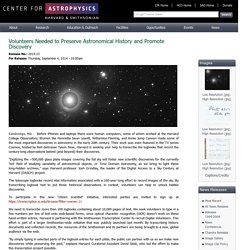
Women like Henrietta Swan Leavitt, Williamina Fleming, and Annie Jump Cannon made some of the most important discoveries in astronomy in the early 20th century. Their work was even featured in the TV series Cosmos, hosted by Neil deGrasse Tyson. Portfolio. Employment & Teaching ExperienceDepartment of Science, Babson College (Wellesley, MA) 2018-presentAdjunct professor of physics, running the Electronics cource.
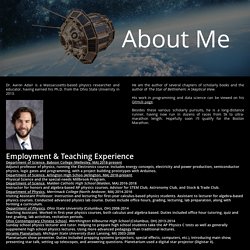
Includes energy concepts, electricity and power production, semiconductor physics, logic gates and programming, with a project building prototypes with Arduinos.Department of Science, Arlington High Schoo (Arlington, MA) 2018-presentPhysical Science and the special-needs Millbrook Program.Department of Science, Malden Catholic High School (Malden, MA) 2016-2018 Instructor for honors and algebra-based AP physics courses. Advisor for STEM Club, Astronomy Club, and Stock & Trade Club. Al-Mizan. ‘Al-Mizan’ is the Arabic word for balance - both the familiar measuring instrument and the metaphorical pursuit of justice and harmony in all human endeavours.
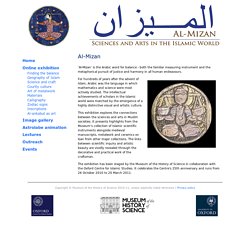
For hundreds of years after the advent of Islam, Arabic was the language in which mathematics and science were most actively studied. The intellectual achievements of scholars in the Islamic world were matched by the emergence of a highly distinctive visual and artistic culture. This exhibition explores the connections between the sciences and arts in Muslim societies. It presents highlights from the Museum’s collection of Islamic scientific instruments alongside medieval manuscripts, metalwork and ceramics on loan from other major collections.
The links between scientific inquiry and artistic beauty are vividly revealed through the decorative and practical work of the craftsman. Dr Wood’s Fish-eye View. It is not an exaggeration to call Robert W.
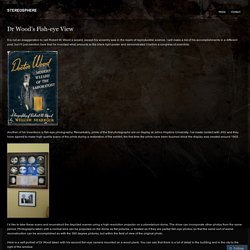
Wood a wizard, except his wizardry was in the realm of reproducible science. I will make a list of his accomplishments in a different post, but I’ll just mention here that he invented what amounts to the black light poster and demonstrated it before a congress of scientists. Essay Prize Series Part 2: The Manuscript Circulation of Sir Henry Mainwaring’s ‘A Brief Abstract’ Essay Prize Series Part 1: Printing the Pacific. Shores of Knowledge: New World Discoveries and the Scientific Imagination, by Joyce Appleby (2013)
By Jorge Cañizares Esguerra The ancient Greeks were curious.
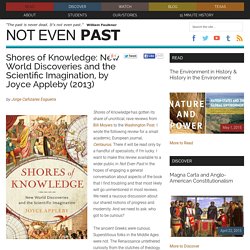
Superstitious folks in the Middle Ages were not. The Renaissance untethered curiosity from the clutches of theology. Curious men then turned their attention onto America and other newly found lands to bring about modern science. Special Report: 50 Years of Moore's Law. Watsoncrick.pdf. 3527316744_c01.pdf. Muslim scientists discover solar eclipse.
World Bulletin / News Desk Nearly 300 years ago İbrahim Müteferrika, the man who was able to bring the printing press to Turkey and the Ottoman world obtained the Ottoman Caliph's permission to print secular and scientific books, and in 1720 he opened Islam's first printing press in Istanbul.
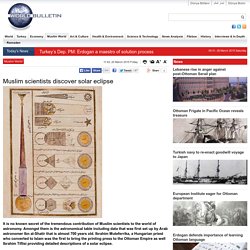
Muteferrika was a former Hungarian priest who had converted to Islam, describing his background and religious beliefs in a book which he called Risale-yi Islamiyye. He was also very concerned with the technical and administrative backwardness of the Ottoman empire. Hence he wrote a book entitled Usul al-Hikam fi Nizam al-Umam, and published it himself in 1731.
Chaucer and the Making of Optical Space - Peter Brown - Google Libri. Renaissance Vision from Spectacles to Telescopes - Vincent Ilardi - Google Books. Annals of the New York Academy of Sciences - Volume 441 Science and Technology in Medieval Society - April 1985. Roos on Grant, 'Science and Religion, 400 B.C.-A.D. 1550: From Aristotle to Copernicus' Edward Grant.
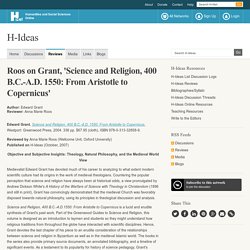
Science and Religion, 400 B.C. -A.D. 1550: From Aristotle to Copernicus. Westport: Greenwood Press, 2004. 336 pp. $67.95 (cloth), ISBN 978-0-313-32858-9. Reviewed by Anna Marie Roos (Wellcome Unit, Oxford University)Published on H-Ideas (October, 2007) Objective and Subjective Insights: Theology, Natural Philosophy, and the Medieval World View Medievalist Edward Grant has devoted much of his career to analyzing to what extent modern scientific culture had its origins in the work of medieval theologians. Science and Religion, 400 B.C. Grant begins his largely successful survey with the claim that the "real beginnings of science and religion commenced with Plato and his student Aristotle" (p. 1).
Grant then analyzes early Christianity, demonstrating that the early Church fathers studied natural philosophy largely to comprehend the Christian faith, rather than for the sake of knowledge itself. Nonetheless Grant's book is very fine and a pleasure to peruse. Notes [1] . [2] . [3]. History of celestial globes: Willem Janszoon Blaeu's globe. Click and drag to rotate.

Fullscreen Animation courtesy of the Virtual Globes Museum. Globe kept in the Slovakian National Archives, Bratislava. The Vault is Slate's history blog. Like us on Facebook, follow us on Twitter @slatevault, and find us on Tumblr. The 1603 Sphaera stellifera globe by Willem Janszoon Blaeu showcases cutting-edge seventeenth-century astronomy in three dimensions. 19th century — Great American Eclipse of 2017. Wine cup may be earliest Greek portrayal of constellations.
A 2,600-year-old two-handled wine cup currently on display at the Lamia Archaeological Museum in Greece has long been thought to depict a random assortment of animals.

But the piece of ancient pottery, called a skyphos,may actually contain one of the earliest Greek depictions of the constellations, a new analysis shows. The study researchers suggested that other ancient artistic representations of animals may also portray constellations, and hold clues to what the early Greeks knew about astronomy, said study researcher John Barnes, a classical archaeology doctoral candidate at the University of Missouri. [Image Gallery: World's Oldest Astrologer's Board] "If we go back and re-evaluate other animal scenes that might have been originally categorized as hunting scenes or animal friezes, then maybe we can find more [depictions of constellations] and get a greater understanding of how the ancient Greeks viewed the night sky," Barnes told Live Science.
Ancient Greek astronomy. How to end an argument - LA Times. Two hundred and thirty years ago, Charles Marie de la Condamine returned to France with proof about the shape of the Earth after spending 10 years in Latin America. For thousands of years, human beings had roamed the planet indifferent to its form until the 18th century, when the subject become embroiled in an intense rivalry between England and France. Isaac Newton had hypothesized at the end of the previous century that the Earth was like a tomato, round in the center and flat at both ends. France's great 17th century scientist, René Descartes, had said nothing about the planet's outline, but because it takes a horse to beat a horse, French controversialists turned to him anyway, deducing from Descartes' writing that the shape was a thick tube, long and straight, more like a Japanese eggplant than a tomato.